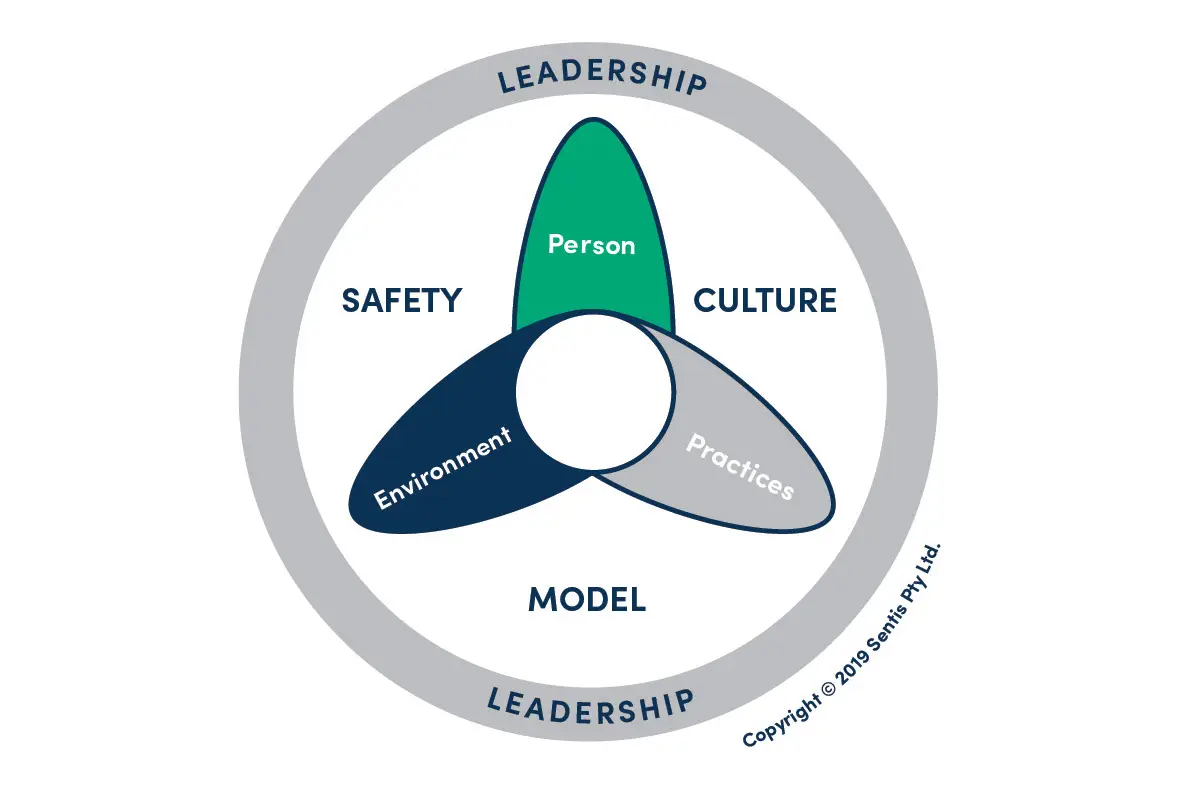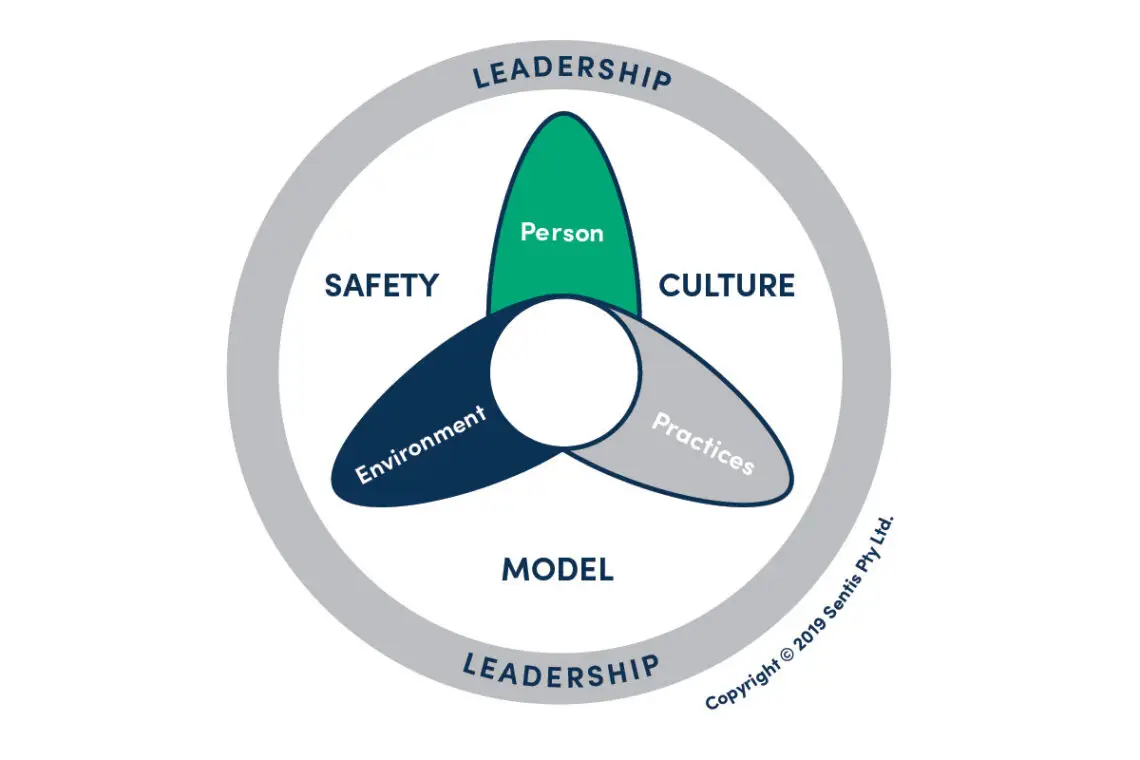Safety culture is an organisations’ shared attitudes, values and beliefs about safety in the workplace—essentially, ‘the way things are done around here’. And a strong safety culture doesn’t happen by chance.
Your organisation’s safety culture also influences safety performance and is a significant factor in predicting the likelihood of safety incidents. So, how can you begin to not only make sense of, but improve something that can feel so intangible?
In any safety culture there are four overarching dimensions—environment, practices, person and leadership—and organisations need to invest in all four dimensions to effectively manage risk and create a mature safety culture.
Let’s explore the four dimensions in our safety culture model and how investing in them can set your organisation up for long-term safety success. By understanding how these components interact, you can create a safety culture that moves beyond compliance to positively influence not only safety outcomes but also broader organisational health.

Components of our Safety Culture Model
1. Environment
The environment component refers to the physical aspects of safety such as equipment, tools, gear, engineering and housekeeping. It also includes things like physical barriers and controls that keep workers protected from predictable risks. Historically, the environmental component has received a lot of attention in traditional safety approaches.
2. Practices
Practices include policies and procedures, safety rules, the effectiveness of start of shift meetings, safety coaching and safety training. Like the environmental component of safety culture, practices have traditionally received a lot of attention, especially when it comes to policies, procedures and laws around how work should be conducted safely.
3. Person
The person component of safety culture refers to workers’ skills, experience, attitudes, intelligence, motivation, behavioural choices and teamwork. Arguably the most critical, the strength of this area comes into play when individuals are faced with an unpredictable risk or situation that has no engineered designs or procedures to help them manage it.
4. Leadership
Leadership impacts the overarching business culture more than any other single factor, and therefore is critical for driving strong safety performance. This component includes management support for safety, the level of consultation that occurs around safety and downwards safety communication.
It’s important to remember that there isn’t one single factor that determines safety in an organisation—it’s a combination of all four dimensions that lead to your safety culture. And depending on how these dimensions are functioning, they can be either helpful or hindering towards creating a strong, positive safety culture.



